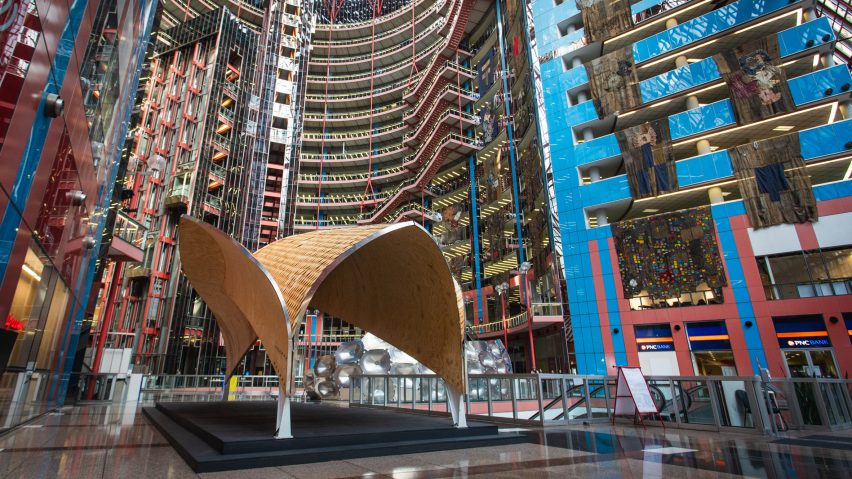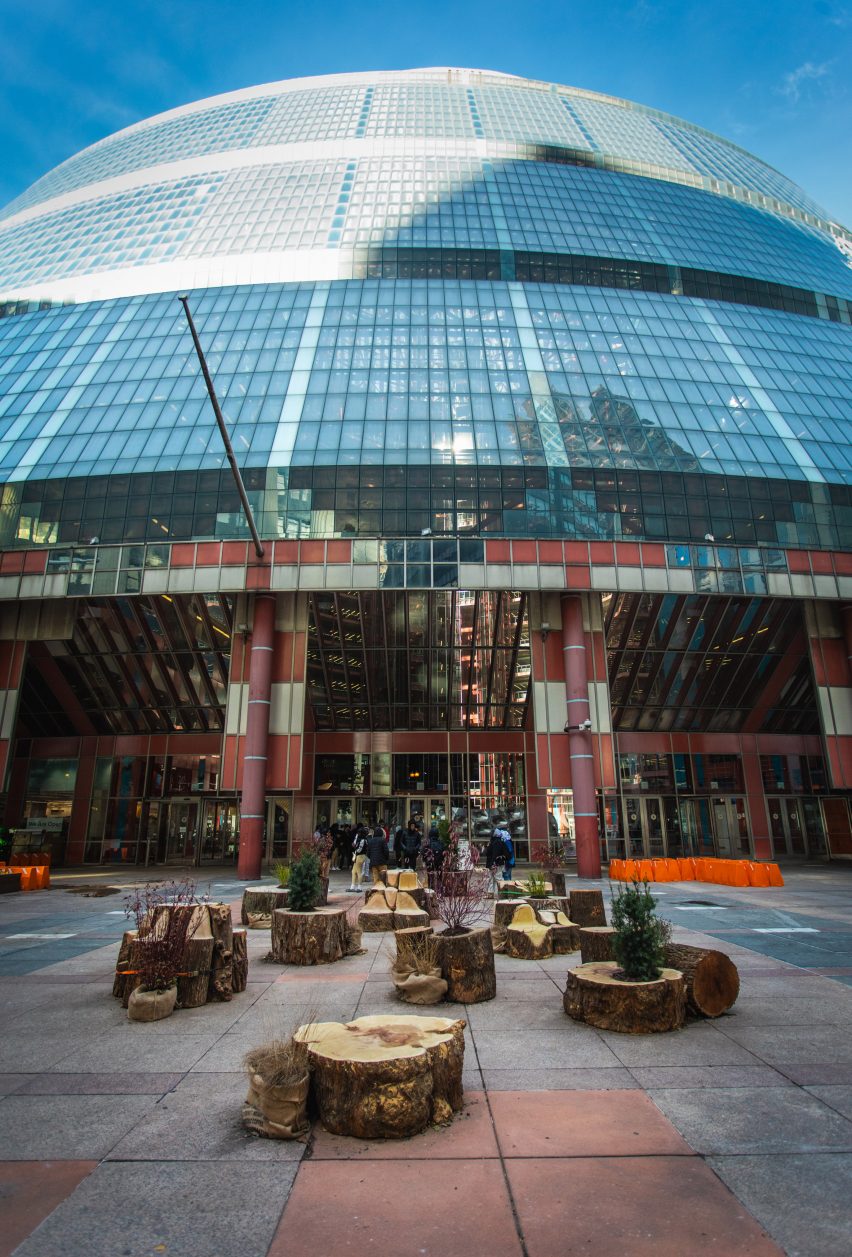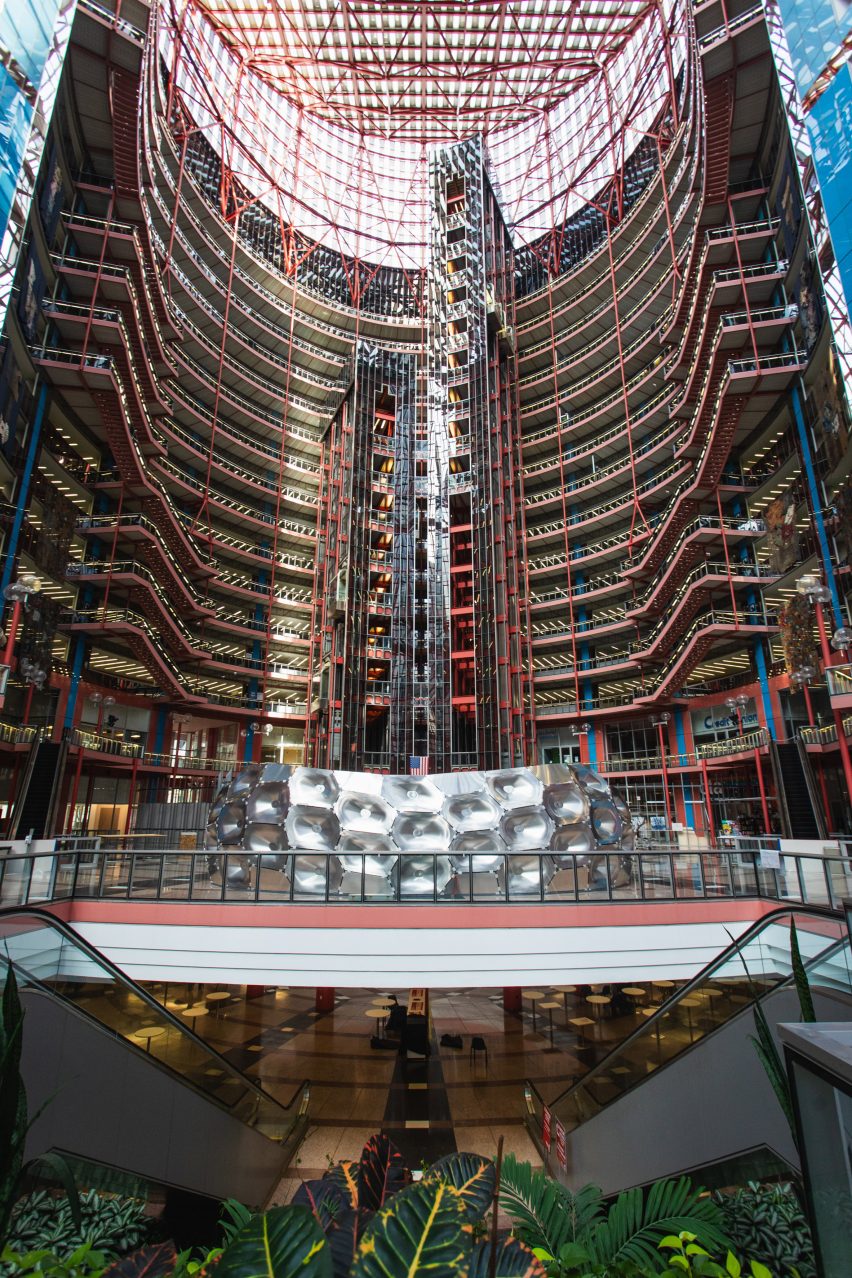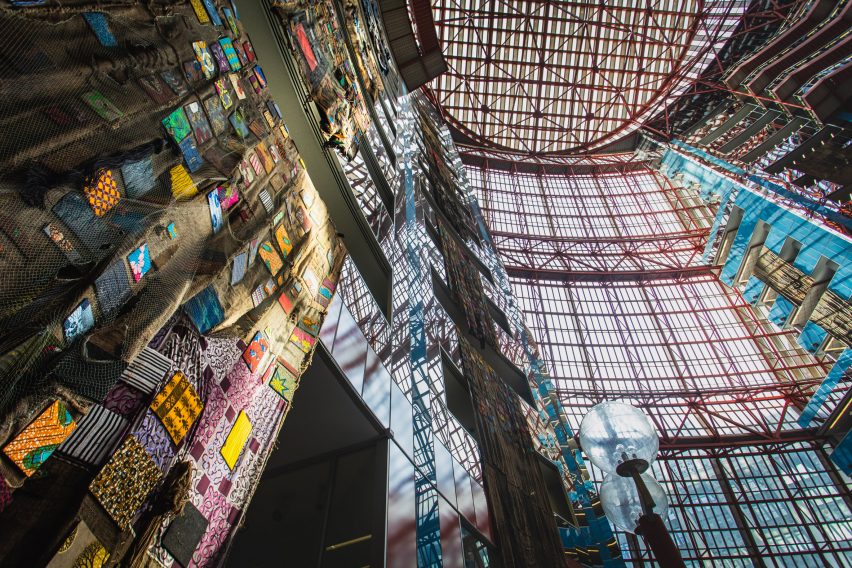
Chicago Architecture Biennial fills postmodern Thompson Center with installations
A wooden pavilion shaped by dehydration and banners made from found urban objects are on show at Chicago's James R Thompson Center for the Chicago Architecture Biennial.
The Floating Museum, an art collective and curator for the fifth Chicago Architecture Biennial (CAB 5), collaborated with stakeholders of the iconic, Helmut Jahn-designed structure to array a series of works in the space.
Large- and small-scale installations were placed inside the building, in its massive circular atrium, as well as outside, connecting the streetscape with the building, which was recently purchased by technology company Google.
A dialogue around public space
"We were interested in this atrium as a shifting space, from public to private – but it will still remain a public space," said Floating Museum co-founder Jeremiah Hulsebos-Spofford.
With the train connections and history of amenities, the atrium of the building will remain open to the public as it converts from governmental to corporate ownership.
"There's interest in starting a forum for discussion and dialogue around this space and what public means," added Hulsebos-Spofford.
Outside the building, Boston studio Stoss Landscape Urbanism arranged a series of sculpted tree stumps and burlap sacks filled with plants into seating areas.
Called Tree Cycles, the installation was designed to highlight "natural urban processes" through the decay and decomposition of natural materials.

It sat in contrast with the glass-clad Thompson Center, a contrast that continued with the first installation inside the building, a wooden architectural pavilion by ITECH masters program at the University of Stuttgart.
The Hygroshell Research Pavilion is a "self-constructing-timber building system". Its arched form is achieved through computational processes that calculate the way that flat-packed wood elements will bend after they are exposed to the environment.
Elsewhere in the atrium, the curators placed large banner-like textile pieces by Ghanaian artist Ibrahim Mahama. Using reclaimed materials, the artist stitched together massive tapestries that were then draped from the sides of the atrium.
The tapestries rely heavily on the burlap sack, an essential material in the transportation of global goods that reference the "history of resource extraction in Ghana," according to Hulesbos-Spofford.
Chicago-based practice Studio Inference placed a metallic band shell within the atrium, which will serve as a place for talks and lectures.
Two creative institutions from outside of the city made contributions to the exhibition. NPR Music recreated its well-known Tiny Desk Concert set up – a desk surrounded by a bookshelf covered with books and other paraphernalia from the music industry.
It is the first time the institution has allowed its iconic desk to be recreated outside of its Washington DC studios and is in line with the overarching theme of the biennial, This Is a Rehearsal.

Also present was a pop-up gallery by the New York-based organisation Storefront for Art and Architecture. The group took over a store once occupied by cell phone provider Sprint.
The Thompson Center was purchased from the government by Google in 2022. Located in Chicago's downtown core, the structure opened in 1985 and for years provided office space for government institutions, as well as a food court and train connection for the public.
According to Capri Investment Group, the developer renovating the structure, there are plans to pare the building back to its structure before reconfiguring it for Google's use.
The CAB 5 exhibition is taking place while the building still maintains much of its original cladding and construction.

"It seemed like a no-brainer to leverage this moment in time to do something in the Thompson Center to achieve, something spectacular, but it wasn't just about putting a few pieces and we want to really activate the space," said Capri Investment Group chief design officer Joel Putnam.
"So we're focused on trying to have events and ongoing discussions, lectures"
The exhibitions at the Thompson Center are just one aspect of the biennial's programming, which is taking place at institutions across the city.
The photography is by Cory Dewald.
The Chicago Architecture Biennial is on from 21 September 2021 to 11 February 2024. For more events, exhibitions and talks in architecture and design around the world visit the Dezeen Events Guide.